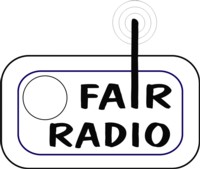Energy of the Sound – Raga Chikitsa. [Subtitle: Nada Chikitsa]
In India had been recognized the response function of ragas as complementary medicine very early for the emotional well-being and health of the people, their physiological effect on the mind, body and soul. In the Indian temples had been used rhythmic sounds of bells, horns and use of shells for the ceremonies, from the knowledge of their therapeutic effect.
Musical sound and its vibrational patterns (Dwhani) are a form of energy in motion transmitted through the medium of air (Vayu) which can penetrate the human body down to each individual cell. In the Indian understanding of music the sound is an energetic form of a cosmic / universal dimension as the source of all being.
dates of broadcasting …
25th November 2013 – 04:00-05:00 pm EST (10:00-11:00 pm CET) @ Radio RaSA (CH)
(premiere: 19th February 2012 @ radio multicult.fm)
broadcasting plan | streaming (Internet Radio & Mobile Radio) | podCast
Sound has healing power. The rhythm in music is directly related to the heart beat. It finds its equivalence in tempo and rhythm. The breath corresponds to the Hindu understanding as Phrana as the sound of life energy. In the history of South Indian classical music (Carnatic) the Melakarta system was developed as we know it today. It is a classification of 72 main ragams. The number 72 corresponds to the 72 main nerve trunks.
The oldest systematic texts, which are known in human history are the Vedas. There are treatises on philosophy, the sense of life and wisdom for a healthy living. Music is part of Updaveda, a sub category of the Vedas. Upaveda is a science-based system built on the Vedic teachings. There are four (4) Upavedas: 1. Ayurveda (on medicine), 2. Gandharvaveda (about music, dance aesthetics us), 3. Dhanurveda (about archery, war and martial arts) and 4. Sthapatyaveda (on architecture, urban planning, etc.).
In our radio show Nada – A concept of sound we have dealt with the outer and inner sound, the nada yoga (nada = sound). You can find the show in our archive for re-listening – www.imcradio.net/onlinearchives . This topic leads us to the theme of today’s program: “Raga Chikitsa“. It deals explicitly with the therapeutic effect of the Raga scales of North Indian (Hindustani) and South Indian Classics (Carnatic).
Chikitsa raga is a scripture of the ancient India. The translation of Raga Chikitsa is: “The knowledge about the use of ragas for healing.” – Chikitsa comes from Sanskrit and means on its own: “The practice of medical science and its therapeutic application“.
Bringing the knowledge of Indian classical music – Raga Ragini Vidaya – and Raga Chikitsa together, we have the basic blocks to describe the therapeutic effects of Indian ragas.
———————–
Suppl. Note: In the Samaveda, an ancient text of Ayurveda describes in detail the phenomenon of sound for music therapeutic purposes. The human body is dominated by the three doshas: Vatta, Pitta and Kapha. You will find the program “Ragas Time Cycles – Ayurvedic Princips” in our media archive for re-listening: www.imcradio.net/onlinearchive .










